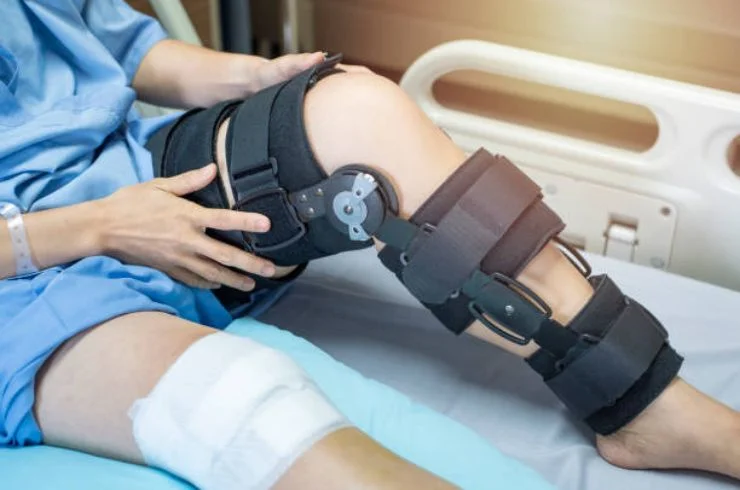PCL Ligament Injury Treatment & Return to Sports
- Home
- Treatments
- PCL Ligament Injury & Return to Sports

What Is a PCL Ligament Injury?
The Posterior Cruciate Ligament (PCL) is one of the major stabilizers of the knee joint. It prevents the tibia from moving too far backward. PCL injuries often occur due to direct trauma to the knee, such as in sports tackles, road accidents, or sudden falls.
Unlike ACL injuries, PCL injuries are less common but can be equally debilitating if not treated correctly.
Symptoms of a PCL Tear
Recognizing symptoms early is key to effective treatment:
- Pain and swelling in the knee
- Instability or feeling of the knee “giving out”
- Difficulty walking or climbing stairs
- Limited range of motion
- Bruising at the front of the knee
Diagnosis and Evaluation
A PCL injury is usually diagnosed through:
- Physical examination (posterior drawer test)
- MRI scan to assess ligament damage
- X-rays to check for associated fractures or joint space changes
Treatment Options for PCL Injuries
1. Non-Surgical Treatment (Grades I & II)
Mild to moderate PCL tears can heal without surgery using:
- Rest, Ice, Compression, Elevation (RICE)
- Knee bracing
- Anti-inflammatory medications
- Physiotherapy to strengthen surrounding muscles
2. Surgical Treatment (Grades III & IV)
Surgery is recommended for:
- Complete PCL tears
- Combined ligament injuries
- Chronic knee instability
Procedures often involve arthroscopic reconstruction using tendon grafts and are followed by a structured rehabilitation program.
Rehabilitation & Return to Sports
A successful return to sports after a PCL injury depends on proper rehabilitation. Key rehab stages include:
Phase 1: Early Recovery (Weeks 0–6)
- Controlled weight-bearing
- Use of knee brace
- Gentle range of motion exercises
Phase 2: Strength & Mobility (Weeks 6–12)
- Quadriceps and hamstring strengthening
- Balance and proprioception training
Phase 3: Functional Training (3–6 months)
- Sport-specific drills
- Plyometrics and agility workouts
- Gradual return to full activity
When Can You Return to Sports?
- Non-surgical cases: Typically return within 3–4 months
- Post-surgery: 9–12 months, depending on healing and strength
Athletes must meet criteria like full knee range of motion, strength equal to the uninjured leg, and pain-free movement before returning to sports.
Long-Term Outlook
With appropriate treatment and rehab:
- Most patients regain full function.
- Recurrence is rare if muscle strength and joint stability are restored.
- A personalized rehab plan ensures safe return to play and injury prevention.
Athletes, recreations sports players, especially in contact or stop-start sports and high activity individuals will have high risks of PCL Injury.
1. Acute injury:
Pain, swelling in the knee, difficulty in knee
2. Chronic injury:
Instabilty in the knee- buckling/feeling of giving away; stiffness.
1. By Maintaining Adequate warm up.
2. Stretching to maintain good range of movement of joints before playing.
3. Maintaining correct posture and technique while playing.
Direct blow to the knee/ twisting injury causing sudden over-straitening of the knee.
Needs immediate attention. Consult an orthopedic surgeon for physical exam.
X-ray to rule out any associated fracture and mri scan to identify the degree of pcl tear- partial/complete and associated acl/meniscus/cartilage injury.
Being inside the joint, the blood circulation to PCL is poor. So, PCL injury won’t heal well without any stimulant to healing.



